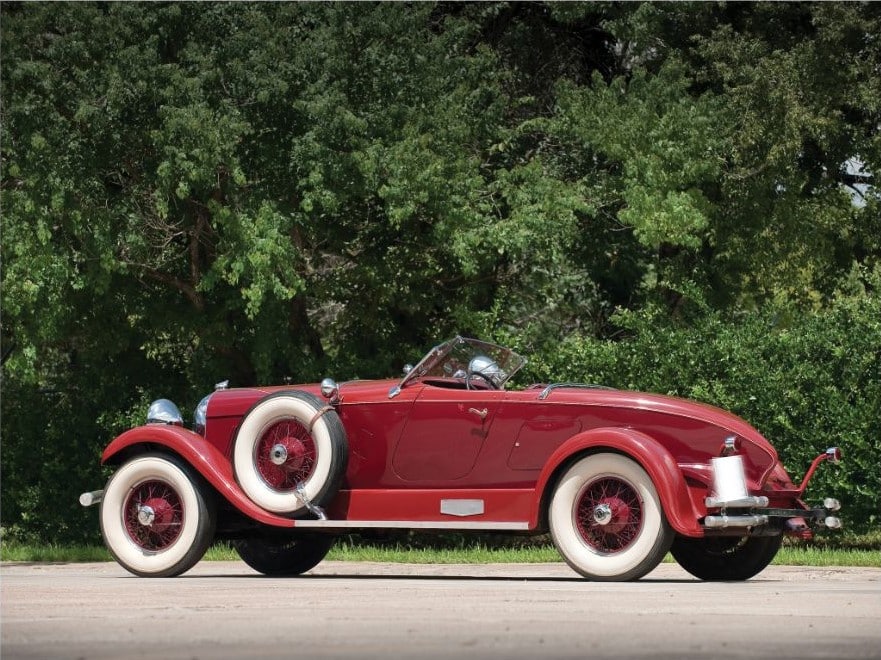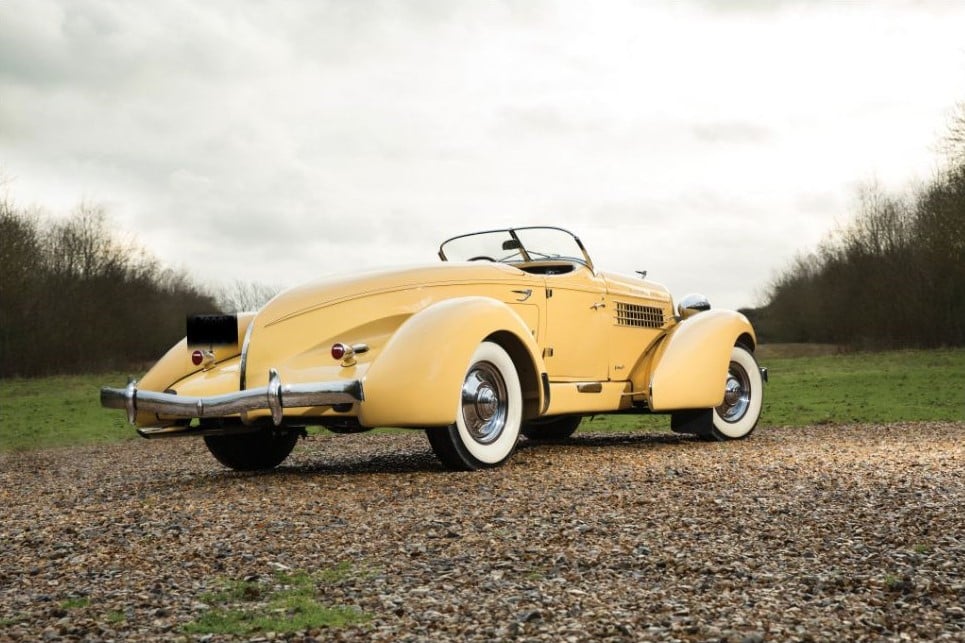Even though the Americans didn’t invent the automobile, they invented the car industry as we know it today. From the very beginning, car companies flourished in America, changing the domestic landscape and the world. Just remember the Ford T, a definite car of the 20th century that sold in millions all over the globe. But on the other end of the specter, America was home to dozens of high-end brands which were the epitome of luxury and performance, even through the Great Depression. One such name is Auburn. A forgotten but majestic brand from those early days. A company that was lost in corridors of time but managed to produce some of the fastest and most striking cars of the period. Here is the story about Auburn Speedster, an actual American sports car, long before the Chevrolet Corvette.
The Auburn Motor Company was founded in Auburn, Indiana, in 1900, right at the dawn of the automotive age. From the beginning, Auburn cars were faster and better looking than the competitors. Interestingly, the company produced powerful and advanced models which could compete with luxury brands like Cadillac, Marmon, or Lincoln but were more affordable. However, by the mid-20s, Auburn was facing a lack of demand and a change of ownership when legendary Errett Lobban Cord took over as the chairman of the company. Cord, already a successful businessman, wanted to promote Auburn as a sports brand along with his newly-introduced brand Cord and Duesenberg, in which he acquired shares. The first thing he did was to initiate the construction of a high-performance. This luxury car would wow the car enthusiast and attracts wealthy buyers looking for the ultimate performance and style.

A year before the infamous stock market crash of 1929, Auburn presented the first Speedster. Built on standard chassis with an enhanced straight-eight engine, the first Speedster models were unique for their high power, fantastic design, and characteristic “boat tail” rear-end design. The windshield was steeply racked, emphasizing the performance of a 4.7-liter, straight-eight engine. The power output was 115 hp, and the top speed was close to 100 mph. The power was sent to the rear wheels over 3-speed manual transmission. In a time when most of the cars on the road had a top speed of 40 mph, this was an incredible machine at best. Very soon, Speedster got a slightly upgraded engine with 120 and 125 hp and a more extended chassis for better handling. Those cars could quickly go over 100 mph, making them the fastest road-going models of the era.

Auburn was doing well till the late 20s when the global financial crisis hit hard, and the company lost most of its buyers. From a business standpoint, Auburn had the performance or craftsmanship of high-class automobiles, but it didn’t have that kind of recognition on the market. When the depression hit, upper-middle-class buyers vanished, and Auburn wasn’t attractive to wealthy people due to a lack of brand power. Also, they were too expensive for economy car buyers. However, Cord pushed further with the second series of Speedster models, introduced in 1931. This model was even faster and more powerful, thanks to a massive 6.4-liter V12 engine with 160 hp. Since this model was introduced in the middle of the economic crisis and since it was very expensive, only 25 cars were completed.
But Errett Lobban Cord didn’t abandon his idea. In 1934, the company introduced the iconic Auburn Speedster 851, which was the best iteration of this model. With improved chassis, the Speedster 851 featured a newly designed body that featured new construction technic to reduce complexity and keep production costs down. Despite being breathtakingly beautiful with a long hood and exposed exhaust pipes, Auburn Speedster 851 had a very interesting drive train. The 4.6-liter straight-eight was back but in two power levels – 150 and 160 hp, depending on the option of the supercharger. But that was not all; Auburn engineers thought of a genius way to improve and adjust the car’s performance with a dual-ratio rear differential. The Speedster 851 had two sets of rear-end gears, the standard 3.0:1 and the high-performance 4.5:1. It was controlled by a lever on the steering column and clutch pedal so the driver could choose if you wanted to leisurely cruise or push the car to its limits. Since the Speedster 851 had the three-speed manual, with this system, it effectively had six gears (three in standard and three in high-performance mode). It was a very advanced solution which gave it a top speed of over 110 mph, an astonishing feat for the mid-30s standards.

Unfortunately, none of those features, iconic design, world-class performance, and a number of celebrity Hollywood owners could save Auburn from a demise in 1937. The recession and lack of recognition from affluent customers meant that Auburn failed to sell enough cars to keep it afloat. At the same time, Cord’s other companies, Cord and Duesenberg, were forced to close their doors and became a part of automotive history. In the end, Auburn Speedster failed to save the company but succeeded in becoming one of the most sought-after American classic cars ever made. Only about 260 cars were ever created in three series during eight years of production, from 1928 to 1936. It is unclear how many survived by well-documented examples are million-dollar cars, and for a good reason. The Auburn Speedster, especially the 851 model, is the best personification of the American Art-Deco car design and triumph of technology and style.






